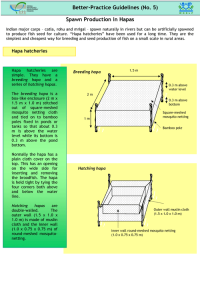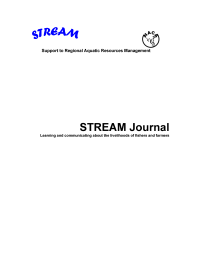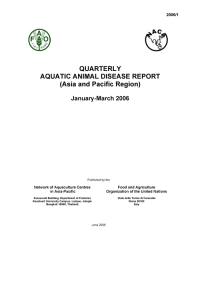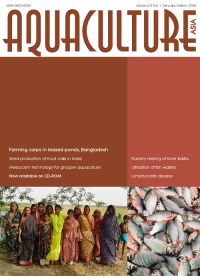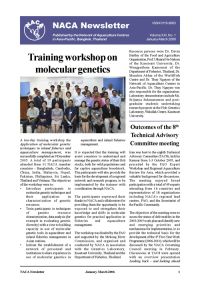In this issue: Policy development as a theme and policy briefs as a genre. Decriminalising Cambodian family-scale fishers through a livelihoods approach to law reform. Longer pond leases in Orissa. One-stop Aqua Shop - a "one-window delivery" service center for aqua-farmers and fishers. Fisheries and aquaculture policy formulation process in Pakistan. Improving the international marine ornamental fish trade to sustain and improve the livelihoods of poor people involved in the trade. About the STREAM Journal. About STREAM.
In this issue:
Nursery rearing of silver barb Puntius goniotus. Artemia enrichment and biomasss production for larviculture. Seed production of mud crab Scylla serrata in India. Macrobrachium on the southwest coast of India. Fish wastes in urban and suburban markets of Kolkata: Problems and solutions. Groups of poor women farming carps in leased ponds, Bangladesh. Lymphocystis disease and diagnostic methods in China. Mesocosm technology advances grouper aquaculture in northern Australia.
In this issue:
Training workshop on molecular genetics. Outcomes of the 8th Technical Advisory Committee Meeting. Taking the 'grey' out of 'grey literature'. An introduction to the South Iran Aquaculture Research Center. Aquaclubs in India achieve good crops this year, with further challenges ahead. Rebuilding resilience of coastal populations and aquatic resources. Recent activities in STREAM. First international PCR training workshop completed. AusAID funds two aquatic animal health projects. Asia Regional Advisory Group continues to support aquatic animal disease management in the region. Indonesia accedes to the NACA Agreement. Governing Council 17 to set NACA Work Programme 2006-2010. Marine fish culture manuals now available in Thai. Aquaculture Rehabilitation Guide in Aceh, Indonesia. Boat building in the tsunami affected areas of NAD: Fishing vessel quality issues. Australasian Aquaculture 2006, 27 - 30 August, Adelaide. East Asian Seas Congress, 12-16 December 2006, China. Aquafeed Production Workshop, 8 March 2006, Thailand.
